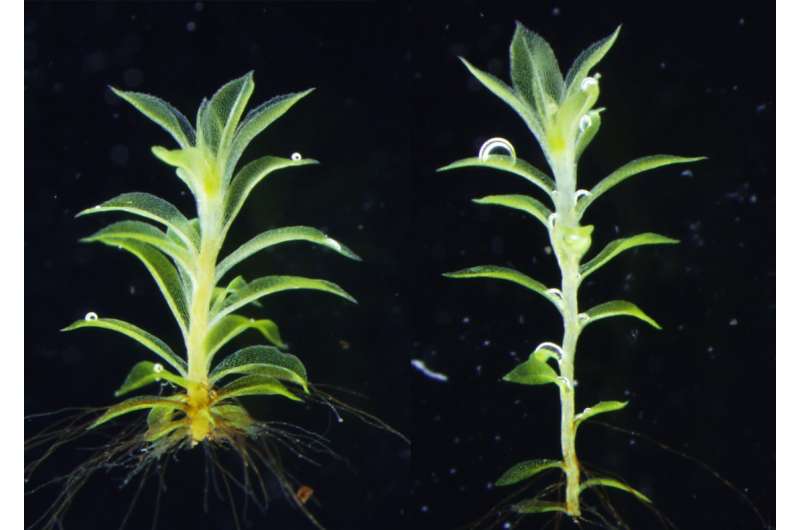The origin of flower-making genes

Flowering plants have evolved from plants without flowers. It is known that the function of several genes, called MADS-box genes, creates shapes peculiar to flowers such as stamens, pistils and petals. Plants that do not produce flowers, such as mosses, ferns and green algae, are also known to have the MADS-box genes. However, it was not well understood how the MADS-box genes work in plants without flowers until now. In order to understand the mechanism of flower evolution, it is necessary to understand how the MADS-box genes work in plants without flowers.
A research team led by Professor Mitsuyasu Hasebe of the National Institute for Basic Biology revealed that the MADS-box genes control sperm motility and cell division and elongation of the stem of gametophores, using the moss Physcomitrella patens. Graduate student Shizuka Koshimizu of the research team said, "There are six MADS-box genes in Physcomitrella patens, and we analyzed their functions using moss in which we broke those six genes. In moss which lost the function of all MADS-box genes, sperm flagella hardly moved. Moreover, in the stem, the increase of the length prevented water supply to the tip, in which sperm swim for fertilization. The MADS-box genes are critical for fertilization in two ways: providing enough water for sperm swimming and producing movable flagella."
Professor Hasebe said, "Both the gametophore and sperm flagella have been lost in the process of evolution as the flowering plants adapted to the dry environment on land. Based on this, it is likely that the MADS-box genes that worked in the gametophore and sperm flagella became unnecessary, and that the flower might have evolved by reusing them for other functions. It is interesting that genetic regulatory networks of development are different between different lineages in plants, although they are relatively conserved in animals"
These research results were published in Nature Plants on January 3rd.
More information: Shizuka Koshimizu et al, Physcomitrella MADS-box genes regulate water supply and sperm movement for fertilization, Nature Plants (2018). DOI: 10.1038/s41477-017-0082-9
Journal information: Nature Plants
Provided by National Institutes of Natural Sciences




















